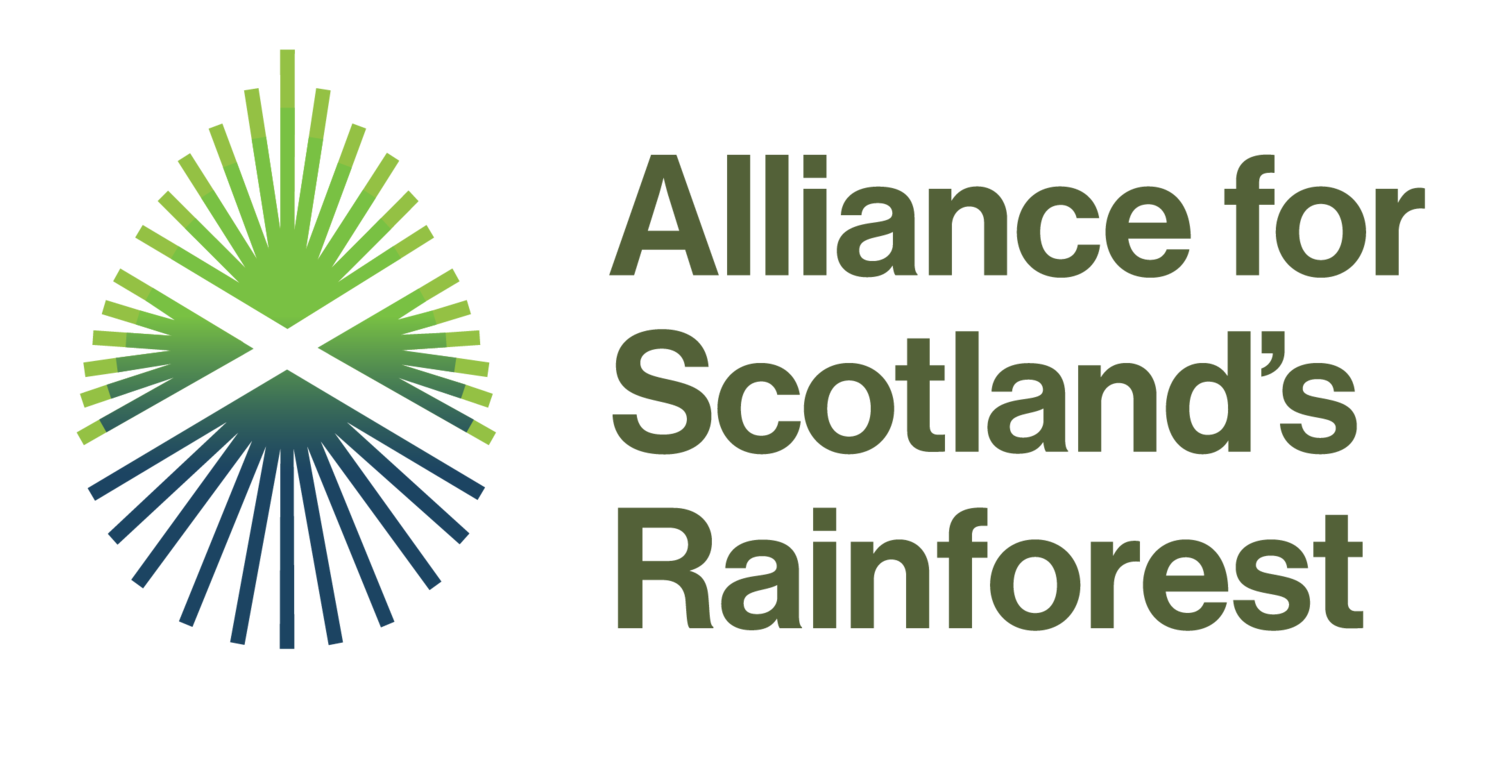Our Rainforest Futures
Project summary
Background
One of the key challenges facing the Alliance for Scotland’s Rainforest (ASR) in its work to restore Scotland’s rainforest is the lack of capacity to deliver long-term habitat restoration work in the rainforest communities of Scotland’s west coast. Our Rainforest Futures seeks to help address that challenge and at the same time demonstrate to policy and decision makers in government the economic and social benefits that restoring and expanding Scotland’s rainforests can bring.
The project aims to mobilise, train and equip people with the skills and knowledge to be guardians and advocates for Scotland’s rainforest. The project will increase awareness of the rainforest, build capacity and expand the available workforce. It will seek opportunities for local people to gain wellbeing, economic and social benefits from the rainforest.
It aims to leave both Scotland's rainforest habitat and its communities more resilient.
The development phase of the project has been made possible with funding from the National Lottery Heritage Fund.
Our vision is: A national movement of rainforest custodians equipped and enabled to save Scotland’s Rainforest.
Project partners
This is an Alliance for Scotland's Rainforest project led by the Woodland Trust. Project partners include Argyll and the Isles Coast and Countryside Trust, Community Woodlands Association, Plantlife Scotland, RSPB Scotland, Scotland's Rural College and the Scottish Rainforest Education Centre.
Project aims and objectives
The project is currently in its development phase and throughout 2025 we are consulting and gathering evidence, engaging with communities and stakeholders, and piloting activities and courses. What we learn will inform an activity plan and bid for a five-year delivery phase. We’re working across the whole rainforest zone, but with a focus on three ‘hub’ areas of Morvern, Torridon and mid-Argyll. Our work is based around three key themes:
Rainforest Action - a critical mass of people in rainforest communities have the necessary skills and training to enable full-scale rainforest restoration.
Rainforest Futures - existing rainforest restoration projects have a long-term sustainable legacy, and more rainforest restoration projects can establish, through community empowerment.
Rainforest Connections - to enable shared learning between rainforest restoration projects within Scotland’s rainforest and beyond.
Rainforest action
The objectives within this theme include:
Scoping work to establish focus and activity strands viable at each of the three rainforest hubs and how these can support work across the rainforest zone. This will include the rationale for area rainforest restoration squads.
Through consultation and trial events, scope out the needs and opportunities for volunteering. This will include identifying barriers to participation and how these can be overcome.
Working with landowners to test and refine the ASR Rainforest Management Guidelines along with the development of a Rainforest Stewardship Scheme for rainforest managers.
Development of a menu of management activity for capital grants, including criteria, application process, terms and conditions, supported by the findings of the current ACT/ASR FIRNS-funded project – ‘Saving Scotland’s Rainforest with Natural Capital’.
Identification of sites of highest importance for lichen and bryophyte diversity – agree and test survey methodologies.
Scoping study to explore the needs and options to provide accommodation for key audiences – from spare room schemes to setting up woodland crofts.
Rainforest futures
Alongside work on potential finance models and community grants the objectives within this theme include:
Scoping study to feed into an assessment of the training needs of a range of audiences and skills levels, including community training. This will lead to a package of training options and include an accredited course.
Development of a pilot project to bring disadvantaged and youth groups to gain experience and help preserve the rainforest – up to 25 people engaged.
Scoping study and feasibility report to identify potential community enterprise opportunities.
Rainforest connections
This theme covers the need to connect and learn from each other with links between projects across Scotland and the wider UK network.
Delivery of a field trip between projects to inform a bigger programme of field trips in the delivery phase – up to 15 partner representatives engaged.
Scoping work to identify opportunities to network specific aspects of rainforest restoration such as deer larders and tree nurseries.
Scoping and recommendations made for an information hub with resources and advice for anyone involved with restoring Scotland’s rainforest.
Scoping study to identify appetite and opportunity for an events and speaker programme, to feed into delivery stage activity.
Estimated cost
Overall expenditure is likely to be around £8.9 million over seven years (two years of development/five years of delivery), split between:
Development stage £816k (£763k actual costs, £52k in kind) – NLHF grant of £686k (now confirmed)
Delivery stage £8.1 million – potential NLHF grant of £5.98 million. Match funding need - £1.6 million. Volunteer time/in-kind £500k.
Outcomes
As a result of this seven-year programme of activity (2 years of development/5 years of delivery) we anticipate:
Scotland’s rainforest will be better managed and in better condition as agreed rainforest management standards have been disseminated across landowning audiences.
Restoration activity is supported by an upskilled workforce, increased contractor capacity and enhanced volunteering opportunities.
Best practice will have been disseminated across Scotland’s rainforest and with other rainforest areas around the UK.
Awareness of the importance and value of Scotland’s rainforest will have been raised within those local communities, and the actions those communities can take to support rainforest restoration. A wide range of audiences will be inspired to want to live and work in the rainforest.
The local economy will be boosted through the development of new community enterprises.
The development of new landscape-scale initiatives across the rainforest will have been supported, creating a longer-term legacy.



